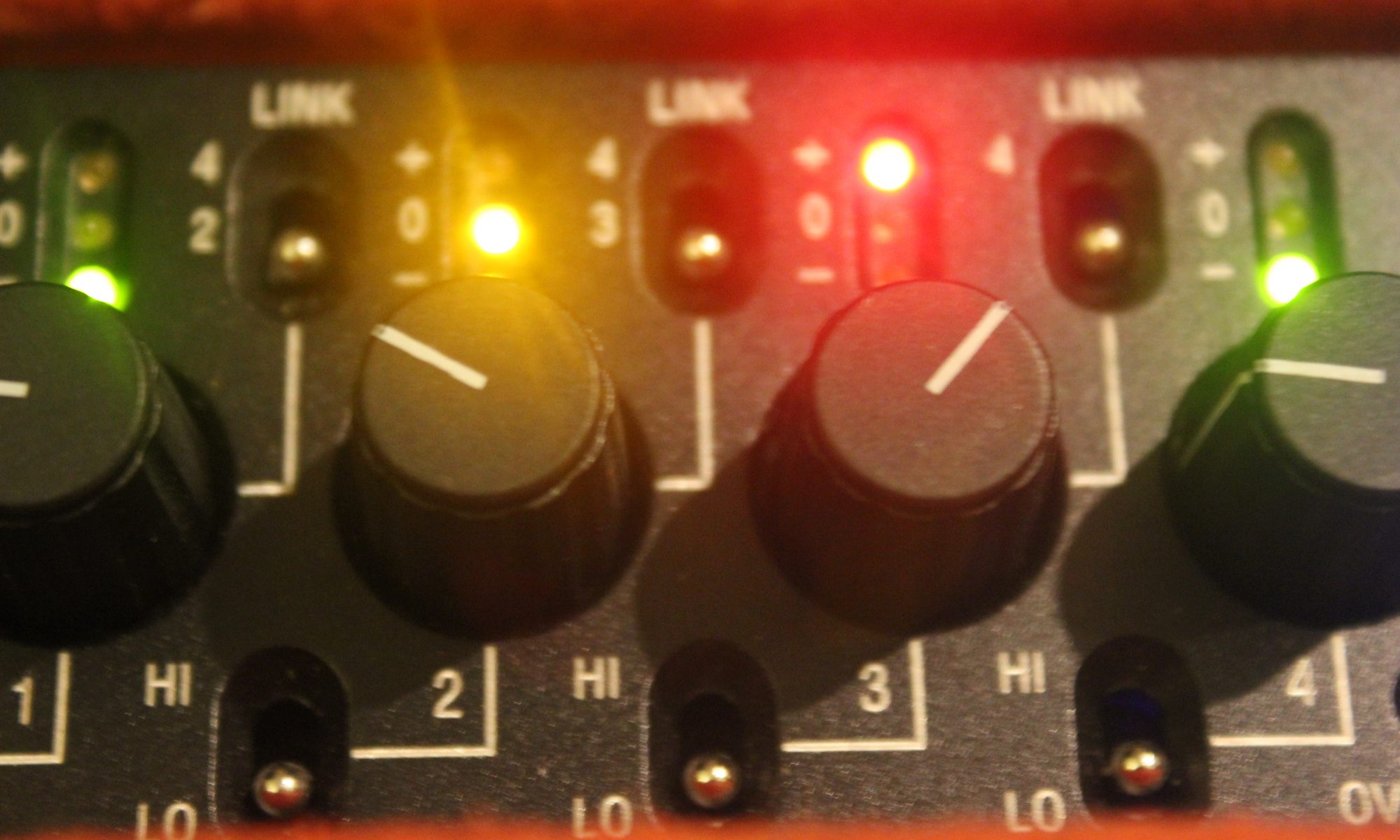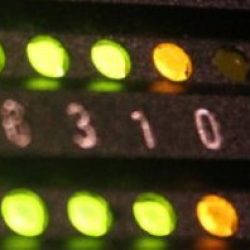I’m now having another look at radio microphones, and a few things have changed since the 2011 comparison. There haven’t been a lot of changes to the base technology, although a number of companies have ‘gone digital’ and there have been a number of refinements made. I’m going to comment a bit more about newer features and how useful they are in the ‘real world’.
Analogue and Digital
Audio Limited have gone full digital now with their A10 system and Sennheiser have their 6000 and 9000 series. Lectrosonics have re-launched a new digital system, the D squared (which I’m yet to test). The Sennheiser EK6042 receiver is backwards compatible with Sennheiser analogue systems, however they perform similarly to the digital transmitters. The Lectrosonics D2 can also do this (with Lectrosonics digital hybrid transmitters) and I’ve not been able to compare performance with an analogue receiver.
Digital does have some advantages and disadvantages compared to analogue systems, for more details see Analogue vs Digital Wireless.
Some of the more established digital manufacturers (Sony and Zaxcom) now offer choices of modulation, some of which can offer better range or ability to squeeze more transmitters into an even tighter frequency range, however this is at the cost of higher latency.
Recording Transmitters
There are some jobs where this is the only option and back in 2011, the only option for this was Zaxcom. Zaxcom also have a US patent on this which has stifled competition in the US. Audio Limited now have recorders on the A10 system (enabled outside the US only) and some of the newer Lectrosonics transmitters can be enabled to either record or transmit.
There is also an advantage to the Zaxcom system, in that they simultaneously be timecode jammed and record enabled over Zaxcom’s 2.4GHz ‘Zaxnet’ control frequency. This can save a lot of time over individually jamming a number of transmitters manually, as is currently the case with other manufacturers’ systems.
Small Transmitters
For some time, the limitation in how small transmitters could be made was down to the size of the batteries that could be put in them. We’ve now got access to smaller Li-Ion batteries with higher energy density and a number of manufacturers have incorporated these into wireless (especially given the higher power draw on digital systems). There is a trade-off, however: smaller batteries=shorter run time. Some of the smaller transmitters are also more limited with their output power- I expect as a decision to retain battery life.
The Lectrosoncics SSM and Zaxcom ZMT3 both use the ‘Fujifilm NP50’ standard battery, while Sony DWT-B03 uses their own NP-BX1 camera battery. Both of these are available from consumer camera shops, however there are a lot of ‘fakes’ around which usually don’t perform as well.
Sennheiser use their own proprietary batteries, which are less readily available, however they have the advantage of providing accurate runtime telemetry.
Another company that’s worth mentioning is Q5x, and although they do make their own receivers, really specialise in transmitters. They tend to be very small and flexible so can be fallen on without injury, for example in sports or during stunts. They use analogue transmission and can be received by wisycom and lectrosonics. However a drawback is that the batteries are built in to the transmitters, so they can’t be swapped out in a shooting day, they only solution they have for this is a secondary battery which can be plugged in.
Bandwidth
This is something which seems to have increased across the board. It was only really Wisycom and Audio Wireless providing proper wideband systems before, however now most manufacturers have at least 75MHz to play with, with some of the Wisycom receivers now going from 470MHz right up to 1.1GHz ‘Air band’.
This can allow greater flexibility, both with larger jobs in the UK where site specific licenses are required, or jobs in other countries where the clearest spectrum may be somewhere else
Close frequency Co-ordination
Something which has been said about digital systems is that frequency co-ordination isn’t something you need to thing about any more (I’m not entirely convinced about this), however there have been significant improvements in analogue systems too. Sennheiser introduced an intermodulation suppression mode in the SK5212-II and Wisycom seem to have taken this further in their newer ‘linear’ transmitters.
The ZHD modulations seem to have allowed zaxcom to squeeze even more frequencies in on digital, however this is at the cost of much higher latency and can only do this with 1 channel per receiver using ZHD48
Remote Control
This actually hasn’t changed much, but can be something which makes a big difference, especially with drama when there are costumes which are awkward to get at. There seem to be a few different ways of doing this:
Lectrosonics use the mic itself to play a ‘dweedle tone’ down. It a modulated audio frequency carrier (like timecode), which tells whichever transmitters that can ‘hear’ it to change a parameter (e.g. frequency, gain etc). Although it’s a bit clunky in some ways, it works rather well and the actors actually realise you’re doing something.
Sony and Zaxcom both use a 2.4GHz signal to remote control their transmitters. It’s possible to monitor and remote control a large number of transmitters using Sony’s rack receiver and a computer. A 3rd party program was made to do the same thing with Zaxcom, but it’s now been discontinued- however Zaxcom did show off something at this year’s NAB.
Audio Ltd also use a 2.4GHz communication system involving bluetooth and a phone app.
Serial Communication
We’re now getting some different recorders and radio mics talking to one another. Zaxcom have been doing this for a while, however it’s only been between their own products.
A few years ago, Sound Devices launched ‘Super Slot‘ as a standard. However, it’s only a connection standard:
“The protocol of serial communication is outside the scope of this electromechanical
specification. In addition to the sample commands listed below, Sound Devices will work to accommodate manufacturers’ existing command sets and protocols.”
So, although there is a mechanical standard, it requires the sound devices firmware to be able to interpret whatever wireless manufacturers output or can receive from their devices. At the moment, communication is possible between the Sound Devices SL-6 and the Audio ltd A10, Lectrosonics SRb and SRc, Sennheiser EK6042 and Wisycom MCR42.
Aaton have also made a serial connection system they call ‘Hydra’ which will allow the Cantar X3 and mini to talk to Audio ltd A10, Lectrosonics SRb and SRc, Sennheiser EK6042, Sony DWR-S02 and Wisycom MCR42.
The Mac OS program Wavetool will also talk to a number of (mostly rackmount) receivers in a similar way and can stream audio.
Comparison
I’ve put together a small table comparing features of different systems, as a bit of a round-up. Digital doesn’t necessarily mean good and all the different systems have their advantages and disadvantages. Also (apart from whether they’re digital or not), this doesn’t really have any bearing on sound or performance, it can be quite subjective. Just because a system has all the bells and whistles does not necessarily mean it’ll perform as well as another.
| Digital | Recording TX | Small TX | 100MHZ+ Bandwidth | Remote Control | Serial Comms* | |
| Audio Ltd A10 | x | x | x | x | ||
| Audio Wireless | x | |||||
| Lectrosonics Digital Hybrid | Either/Or | x | x | x | ||
| Sennheiser 6000/9000 | x | x | x | x | ||
| Sony DWX | x | x | x | x | x | |
| Wisycom | x | x | ||||
| Zaxcom | x | x | x | x | x |
*with other manufacturers’ equipment

